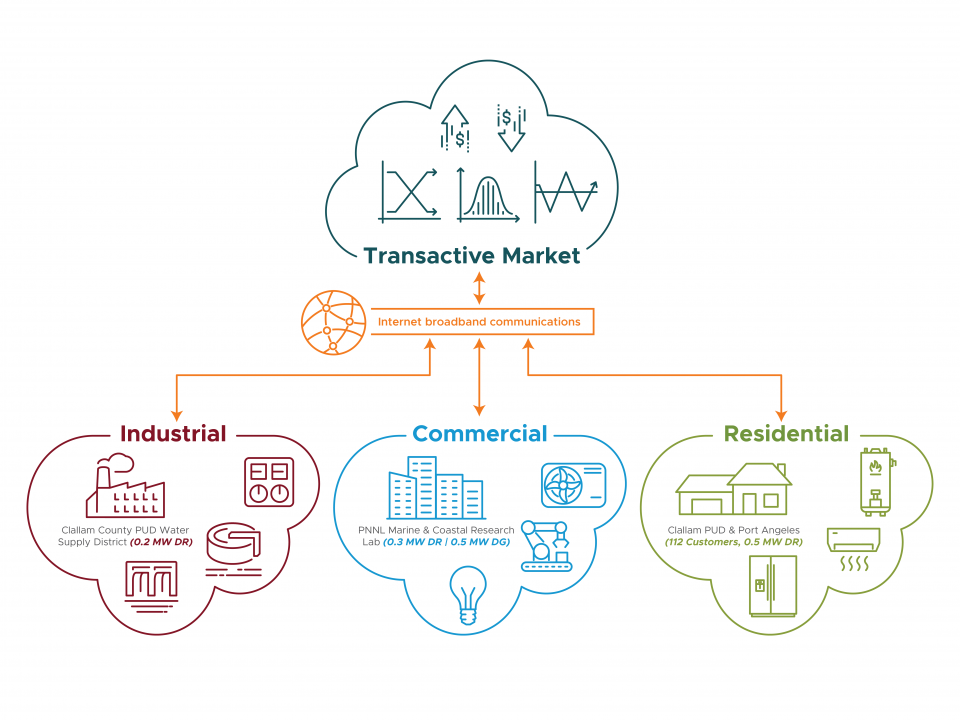GridWise Olympic Peninsula Demonstration
The GridWise project established a first-of-a-kind transactive retail market with real-time prices on five-minute intervals. The market coordinated residential, commercial, and municipal (water pumping) loads, as well as distributed generation, to manage a distribution capacity constraint and to continually respond to fluctuations in regional wholesale prices. The project included an economic experiment. More than 100 residential customers were given a choice of contract agreements, which provided insights into how customers might adjust their energy consumption based on price changes. The options included a transactive real-time price, a time-of-use rate with critical peak pricing, and a traditional flat rate.
The project was conducted by PNNL for the DOE Office of Electricity Delivery and Energy Reliability (now the Office of Electricity [OE]) on Washington’s Olympic Peninsula, and also in the cities of Yakima, Washington, and Gresham, Oregon. The Bonneville Power Administration, Pacificorp, and Portland General Electric provided additional support, and the effort involved collaboration with Clallum County Public Utility District #3 and the City of Port Angeles, Washington. IBM and Whirlpool Corporation provided substantial in-kind support to the project for the transactive network and smart appliances, respectively.
The figure below provides an overview of the project. Communicating meters, gateways, thermostats, and load control modules for water heaters and clothes dryers were installed in residential homes. Homeowners used the installed equipment to direct their residences’ automated response to process, based on their relative desires for comfort or cost savings.

Key findings:
- Sustained peak load reductions of 15 percent over the course of the year were achieved, and up to 50 percent for periods of up to three days.
- For the opportunity to save on bills, significant numbers of residential customers would sign up for a real-time pricing plan that varies on a five-minute interval. The customers would want computer-based technology that preserves their right to choose relative preference for comfort or savings, allows them to change it at any time, and simply and automatically reflects their thermostat and appliance management choices.
- Rates or incentives that reflect the time-varying cost of electricity and its delivery can be implemented so that no individual customer ever pays more than their customary electric bill, which is based on a constant, flat price for power.
- Technology that automates customer responses to real-time prices can help manage very short-term power fluctuations introduced by large amounts of clean wind generation and reduce carbon emissions, with little or no impact to comfort. Because it is not obtrusive, the cost for obtaining this additional response is very low—far cheaper and cleaner than ramping power plants up and down.
Everyday household appliances equipped with Grid Friendly™ sensors can detect imminent stability problems on the grid and delay non-essential consumption for up to three minutes. This helps keep the grid reliable and secure without impacting customer comfort.